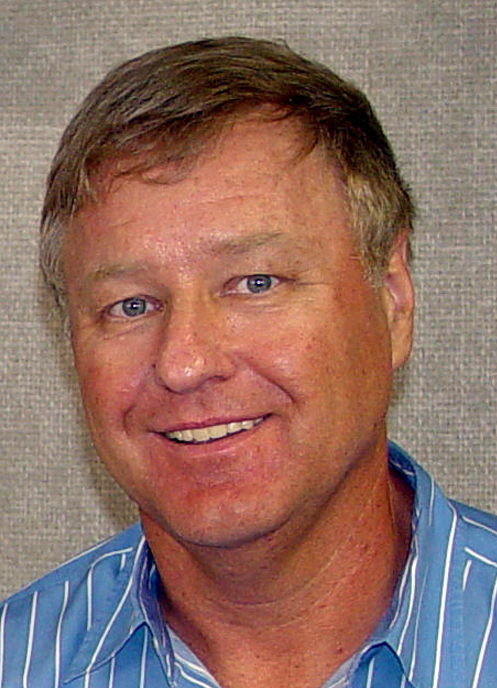MICHAEL KNIGHT: WHAT FORD'S DEPARTURE FROM NHRA PRO RACING REALLY MEANS

What are the business ramifications of Ford’s decision to withdraw its support from the NHRA Mello Yello series when existing contracts expire after the 2014 season? CompetitionPlus.com columnist Michael Knight offers some quick thoughts based on his quarter-century of insider experience as a driver, team, sponsor and series representative in most of the major auto racing series. He represented Valvoline in NHRA, working with Joe Amato and the late Darrell Russell, among others.

What are the business ramifications of Ford’s decision to withdraw its support from the NHRA Mello Yello series when existing contracts expire after the 2014 season? CompetitionPlus.com columnist Michael Knight offers some quick thoughts based on his quarter-century of insider experience as a driver, team, sponsor and series representative in most of the major auto racing series. He represented Valvoline in NHRA, working with Joe Amato and the late Darrell Russell, among others.
* There is no credible way for NHRA to put a positive spin on this story: Ford’s decision represents a vote of No Confidence. Corporations make major moves like this based on extensive research and Ford obviously has concluded there is little prospect for NHRA to increase its fan base, or make it more demographically attractive for its target sales audience, in at least the mid-term. Ford’s statement used politically correct language: “This decision was based on an ongoing assessment of our motorsport programs’ effectiveness...” Translation: NHRA simply is not an effective enough stage to sell cars. There are an alarming number of empty seats at National events, the ESPN TV audience is alarmingly down from this time a year ago, and consistent mainstream national media coverage is lacking.
* While it’s been true throughout racing history that automakers come and go -- Dodge left NASCAR after last season -- NHRA is less able to absorb the blow. Ford’s departure sends a chilling message to other car companies, sponsors -- and potential sponsors.
* Can you imagine Chevrolet letting Dale Earnhardt or Jeff Gordon go? STP cutting ties with Richard Petty? Budweiser (under previous ownership) with Kenny Bernstein? Yet that’s what Ford is doing with the iconic John Force. Those ultra-special relationships are rare in the sports marketing world. The fact that Ford is willing to do so, and forfeit the great equity it has built with drag racing’s winningest driver and biggest personality, reinforces the message that the NHRA platform isn’t selling enough product.
* Maybe the 64-year-old Force isn’t the best spokesman to market to younger car buyers. But what about 25-year-old daughter Courtney? Already a three-time National event winner and national magazine cover girl, Courtney is a rising star/celebrity and possible top-20 athlete endorser over the next decade. Again, letting her get away is a clear signal of Ford’s loss of confidence in professional drag racing as a sales vehicle.
* Team Force aside, Ford is ending its long-standing racing ties with the Tasca family, one of New England’s largest Ford dealers. That puts Bob III in the uncomfortable business spot of racing something that doesn’t have a Blue Oval on the hood. And replacing his Motorcraft sponsorship.
* What becomes of the BOSS engine Ford and John Force Racing developed? Can Force, or someone else, sell the rights to another manufacturer and rebadged the engine? Or are Force, Tasca and Tim Wilkerson left with a bunch of boat anchors?
* Where will Force and NHRA turn for engineering support to replace the resources Ford provided to improve safety?
* Finally: Where will Ford be spending its motorsports marketing dollars? NASCAR, of course, and more engineering and aerodynamic help is certainly needed in that arena. NASCAR introduced its new Generation-6 car this season, designed to more closely resemble showroom models, and the Fusion’s performance has trailed that of Chevrolet’s SS and Toyota’s Camry. Ford added Roger Penske’s team to its NASCAR roster this season (joining long-time standard-bearer Roush Fenway Racing) with a five-year commitment after Dodge offered Penske only a three-year deal. And then there’s the United SportsCar Series, which is what the merged Grand-Am and American Le Mans Series will be called in 2014. With Jim France as series chairman and utilizing a variety of NASCAR’s marketing and communications capabilities, the unified sports car tour is positioned for growth over the mid-to-long term. That strong connection to NASCAR certainly makes USCS politically attractive to Ford, which will have at least the Michael Shank team in the headliner prototype class, and possibly others. Ford is developing new brand-specific bodywork for next year as well as a new EcoBoost engine.
* Bottom line: It makes business sense.
Follow Michael Knight on Twitter: @SpinDoctor500





































